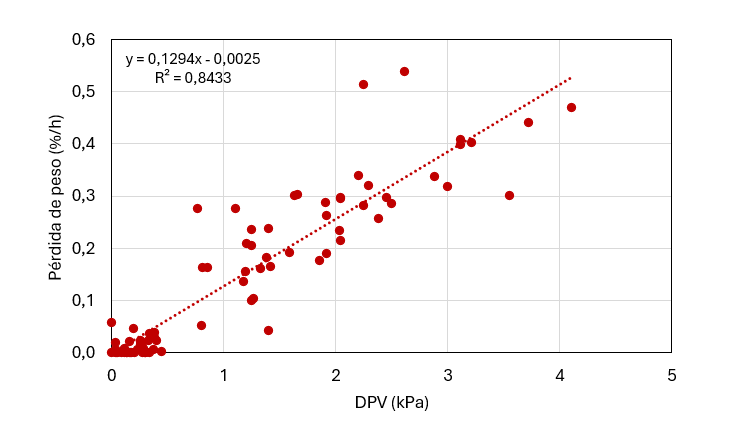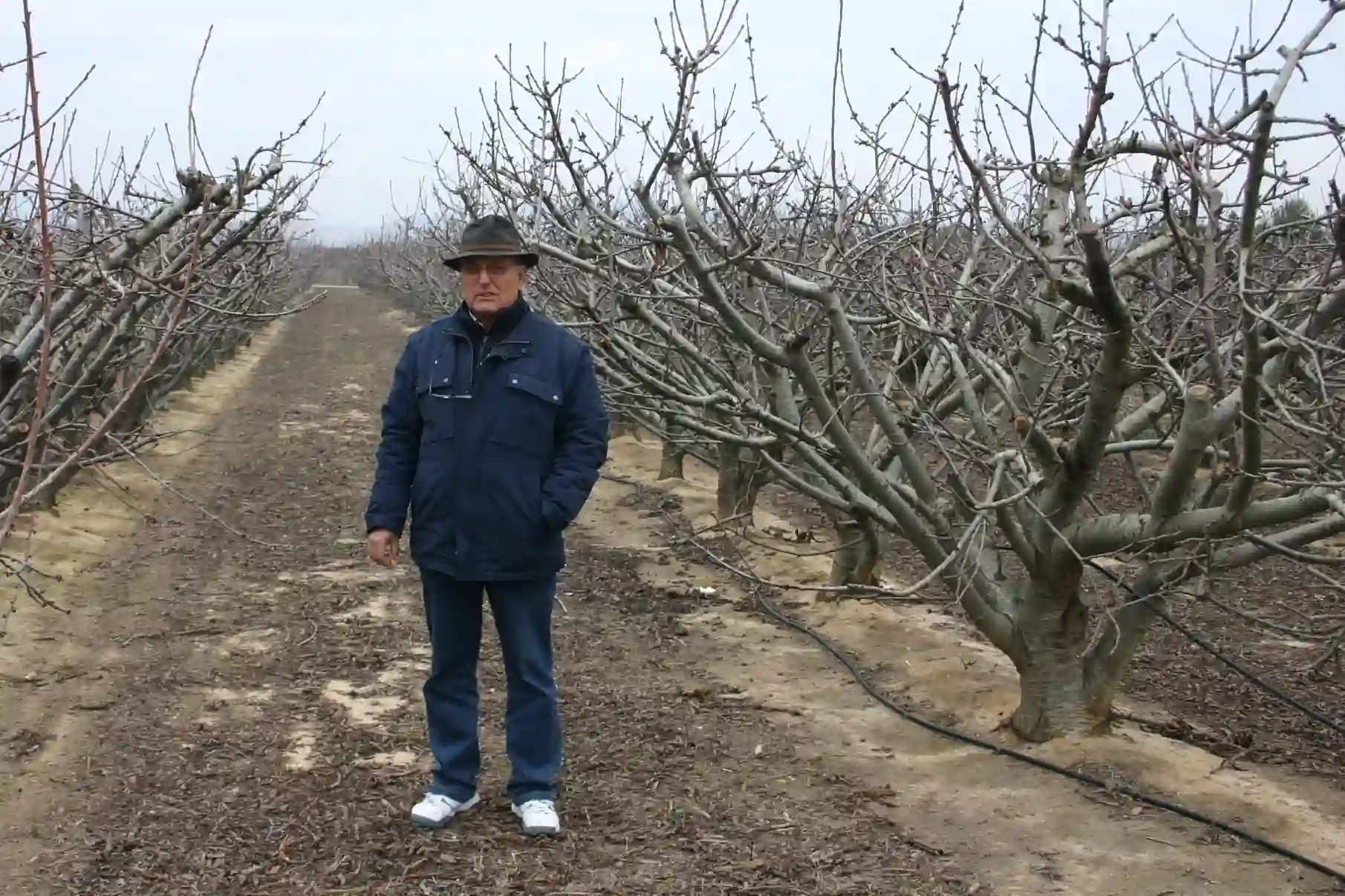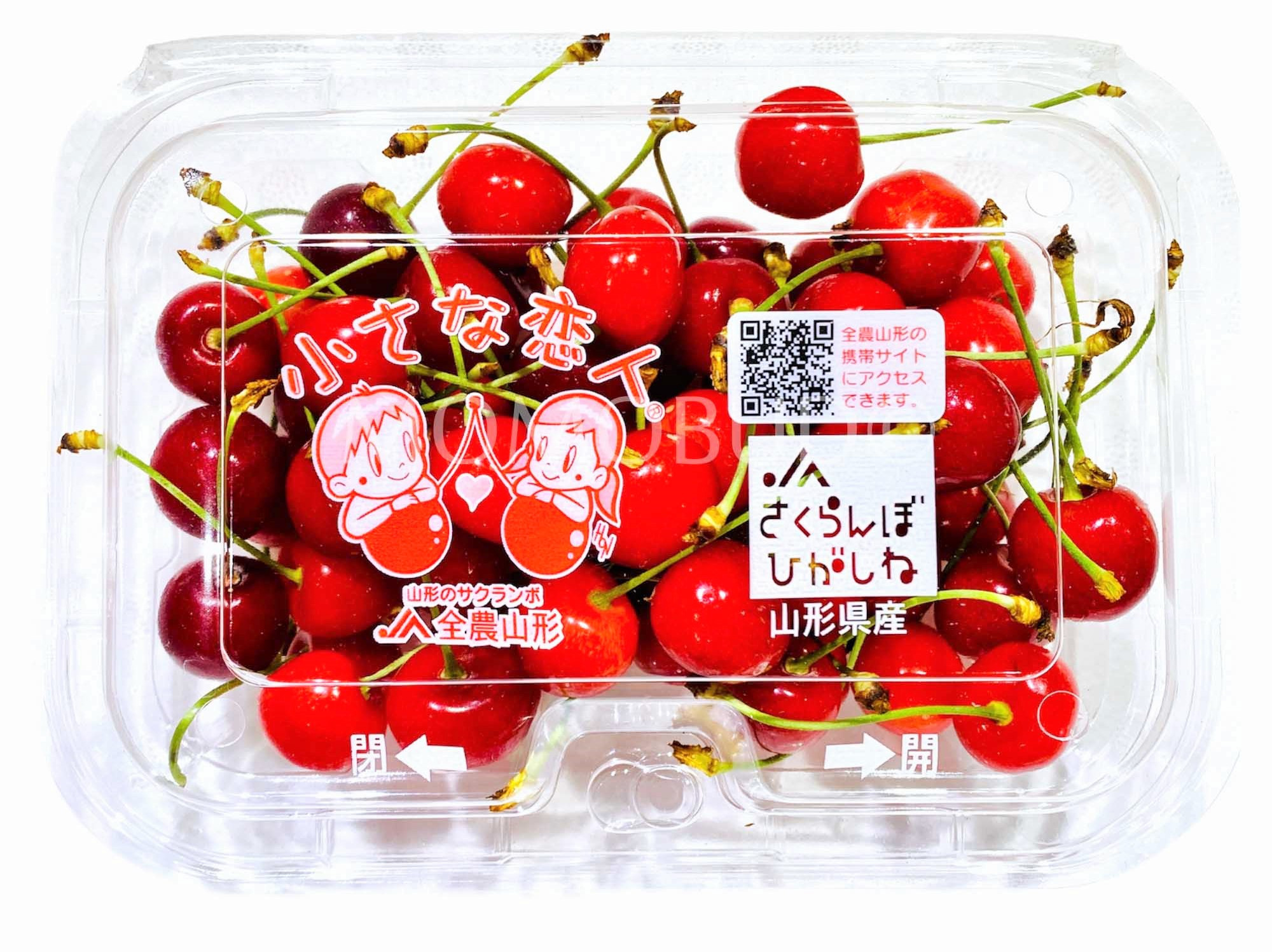The post-harvest phase is a critical stage of the cherry's shelf life, where multiple factors must be managed to maintain fruit quality until it reaches the final consumer. Among these factors, the vapor pressure deficit (VPD) stands out as a decisive indicator for monitoring and controlling dehydration during the storage and transport of cherries.
Understanding the relationship between VPD and water loss in cherries can make a significant difference in preserving freshness, texture, and flavor.
The VPD measures the difference between the vapor pressure of the air and that on the surface of the fruit, indicating the air's ability to absorb moisture. A high VPD indicates that the air can absorb more moisture, which could lead to further dehydration of the cherries if appropriate measures are not taken.
Cherries are highly perishable fruits with a thin and delicate skin, making them particularly vulnerable to water loss during the post-harvest period. Dehydration is one of the main factors affecting their quality, primarily reflected in weight loss, browning of the stem, and a reduction in pulp firmness.
These changes not only impact appearance but also reduce the fruit's commercial value and shelf life. For this reason, controlling relative humidity and temperature is essential to minimize water loss, and this is where the VPD plays a crucial role.
The VPD becomes a valuable tool for regulating environmental conditions in storage facilities and during transport. A low VPD indicates that the air is more saturated with moisture, reducing the risk of dehydration, while a high VPD indicates that the air has a greater capacity to absorb moisture, which could accelerate water loss in the fruit.
Studies conducted by the R&D team of Johnson Industrial Projects have established the relationship between VPD and the weight loss suffered by cherries due to dehydration. Figure 1 shows the results of evaluations carried out over several seasons, on different cherry varieties, and through the various stages of the post-harvest process, from harvest to sea transport to the export destination.
As can be seen, the higher the VPD, the greater the weight loss due to dehydration, with a weight loss of 0.5% per hour of exposure under VPD conditions of 4 kPa. These values are usually observed during harvest when cherries are stored in bins in the orchard and during field storage before being transferred to the processing and packaging plant.
It is also possible to identify minimal dehydration levels close to 0%, observed under VPD conditions below 0.5 kPa. These values can be observed both in collection centers equipped with humidification systems and in cold rooms and during sea transport.
 Image 1.
Image 1.
In addition to the relationship between vapor pressure deficit and dehydration, these tests have allowed us to identify how weight loss is reflected in the condition of the cherry stems. Figure 2 shows that the percentage of cherries with healthy (fully green) stems decreases as cherry weight loss increases, reaching levels below 50% after a total weight loss of 1.5% and tending to 0% when the weight loss exceeds 2.5%.
Although the condition of the stem is not solely responsive to dehydration but also to other variables such as nutritional content, ripeness level, or variety (which explains the high variability observed), the trend to decrease with increasing dehydration levels is evident.
 Image 2.
Image 2.
Similarly, Figure 3 shows the trend of increasing the percentage of cherries with severe dehydration of the stems at increasing levels of weight loss due to dehydration, reaching more than 50% after weight loss of 2% and more than 80% after weight loss of 2.5% throughout the post-harvest process.
These results lead to the conclusion that controlling the vapor pressure deficit (VPD) is a crucial tool for minimizing cherry dehydration during the post-harvest process, ensuring better stem condition and optimal fruit quality at the destination. Constant monitoring of VPD during post-harvest will allow growers and exporters to make informed decisions to preserve cherry quality.
 Image 3.
Image 3.
To control VPD, it is essential to properly manage the temperature and relative humidity of the storage environment. Lowering the air temperature reduces its capacity to retain moisture, thereby reducing the VPD and the dehydration of the cherries.
Similarly, maintaining high relative humidity in the storage environment is crucial for maintaining an optimal VPD. Therefore, both the cold chain and the implementation of humidification systems in the stages preceding the cherry cooling process are essential to keeping VPD at optimal levels and avoiding significant weight losses, ensuring that the cherries reach international markets in the best possible condition.
Source: El rol clave del déficit de presión de vapor para mantener cerezas frescas en la poscosecha
Image: SL Fruit Service
Valentina Vesely
Head of the R&D department at PIJ.
Cherry Times - All rights reserved















